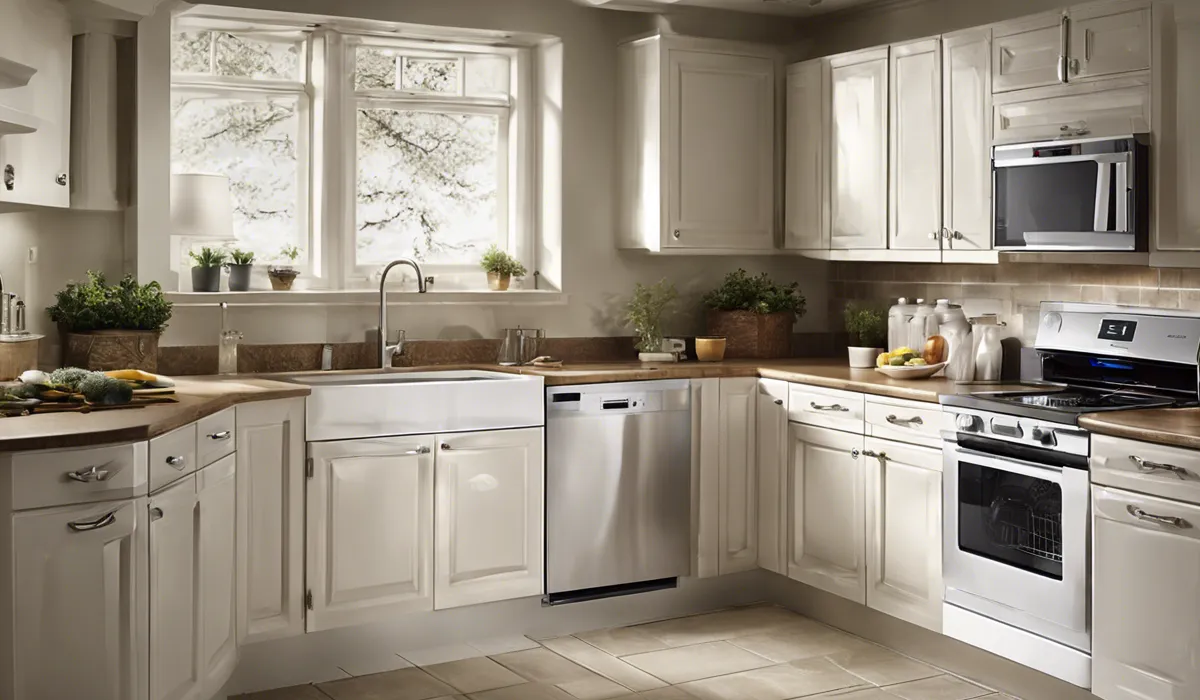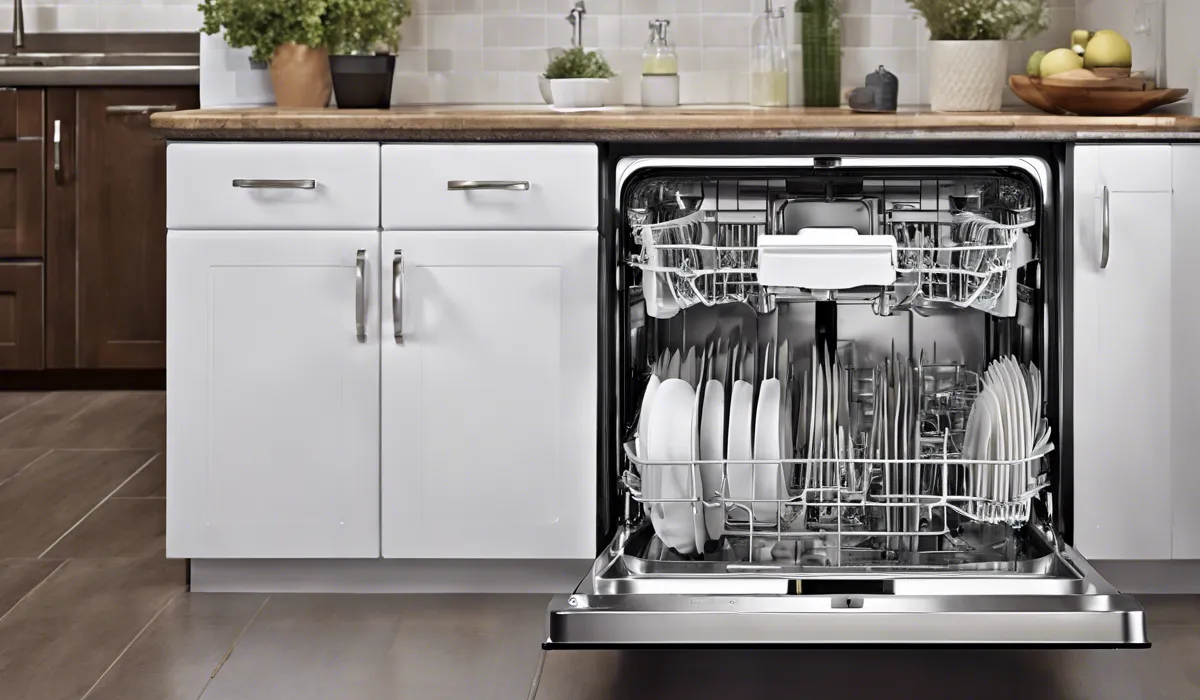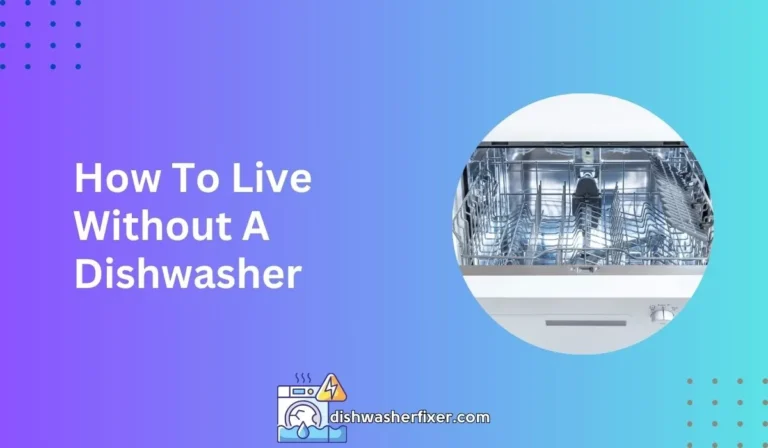Is Dishwasher Connected to Sink? Plumbing Insights Revealed
Yes, dishwashers are typically connected to the sink’s plumbing system. They use the sink’s water supply for intake and often connect to the sink’s drainpipe for wastewater disposal. Additionally, the dishwasher may be linked to the garbage disposal unit if one is present.
Understanding Dishwasher Connections

Integration with Kitchen Plumbing
The modern kitchen is equipped with appliances that streamline our daily tasks, and the dishwasher is a vital component of this ecosystem.
It connects seamlessly with the kitchen’s plumbing, drawing water from the supply lines and expelling wastewater into the drainage system.
As we delve into how dishwashers are linked to our kitchens, we’ll see they are designed to work in tandem with other plumbing fixtures, especially the sink.
The Sink’s Role in Drainage
The sink is more than just a place for washing dishes; it plays a crucial role in the dishwasher’s functionality.
After a cycle, the dishwasher pumps out the used water, and it’s often the sink’s drainpipe that receives this wastewater. A proper connection ensures that water flows directly into the sewer system without any hiccups.
Hot Water Supply Connection
For effective cleaning, dishwashers require a hot water supply. This is typically provided by a direct connection to the kitchen’s hot water line.
The heat assists in breaking down food particles and sanitizing your dishes, making the hot water connection a crucial part of the system.
Preventing Backflow: High Loop and Air Gap
An essential aspect of the dishwasher’s plumbing is the inclusion of a high loop or an air gap. These mechanisms prevent contaminated water from flowing back into the dishwasher or the clean water supply.
The high loop is a simple yet effective bend in the drain hose, while an air gap is a small device installed on the countertop next to the sink, ensuring that the kitchen maintains a hygienic environment.
Installation Process of a Dishwasher Related to the Sink

Connecting the Dishwasher: A Step-by-Step Guide
Installing a dishwasher involves several steps that connect it to the kitchen sink.
The process includes positioning the dishwasher, connecting the water supply line to the hot water source, and attaching the drain hose to the sink’s drainage system or garbage disposal unit.
Tools and Materials for Installation
To ensure a smooth installation process, you’ll need a variety of tools and materials, such as screwdrivers, adjustable wrenches, Teflon tape, and hoses.
Gather these items beforehand to prevent any unnecessary interruptions during the setup of your dishwasher.
Attaching the Drain Line
Common practices in dishwasher installation involve attaching the drain line either to the garbage disposal or directly to the sink drain.
This is a crucial step that allows for the proper disposal of wastewater, and it must be done with care to ensure a tight fit and prevent leaks.
Securing a Leak-Free Connection
A leak-free connection is vital for the long-term health of your kitchen’s plumbing.
It’s important to check all connections twice, use Teflon tape where needed, and ensure that clamps and fittings are secured tightly. A little attention to detail in this area can save you from future headaches.
Troubleshooting Common Issues with Dishwasher-Sink Connections

Identifying Connection Problems
When things go awry with your dishwasher-sink connections, you’ll notice certain symptoms. Water not draining properly or leaks under the sink can indicate that there’s a blockage or a loose fitting somewhere in the system.
DIY Fixes for Minor Issues
For minor issues such as small leaks or slow drainage, there are often simple DIY fixes you can perform. Tightening connections, checking for clogs in the drain hose, or inspecting the air gap for obstructions can resolve many common problems.
When to Call a Professional
For more complex issues, such as persistent leaks, major blockages, or if you’re unsure of the problem, it’s best to call a professional.
A trained plumber can accurately diagnose and fix the issue, ensuring your dishwasher and sink connection is restored to perfect working order.
Preventative Maintenance
To avoid future issues with your dishwasher-sink connections, regular maintenance is key.
This includes routinely checking for leaks, ensuring that the air gap or high loop is functioning properly, and cleaning the filters and drain lines to prevent clogs. Taking these steps can help you maintain a trouble-free kitchen plumbing system.
FAQs About Dishwasher and Sink Connections
Is a dishwasher always connected to the kitchen sink?
Most dishwashers are connected to the kitchen sink’s plumbing for water intake and drainage, but in some installations, they may be connected directly to the main water supply and drain.
Do dishwashers need to use the sink’s water supply?
Yes, dishwashers typically use the sink’s water supply for their water intake.
Can a dishwasher drain without being connected to a sink?
A dishwasher can drain without being connected to a sink if it is set up with an alternative drainage system that complies with local plumbing codes.
Is the dishwasher’s connection to a garbage disposal unit common?
Yes, it is common for a dishwasher to be connected to a garbage disposal unit if one is present, allowing it to grind up food particles before they enter the drainage system.
What happens if the dishwasher is not properly connected to the sink plumbing?
If the dishwasher is not properly connected to the sink plumbing, it may result in leaks, poor drainage, or even damage to the appliance and home.
Final Thoughts
Dishwashers are integrated into the sink’s plumbing system, utilizing its water supply for operations and connecting to the sink’s drainpipe for disposing of wastewater.
When available, they may also connect to a garbage disposal unit, streamlining kitchen waste management and plumbing efficiency.





